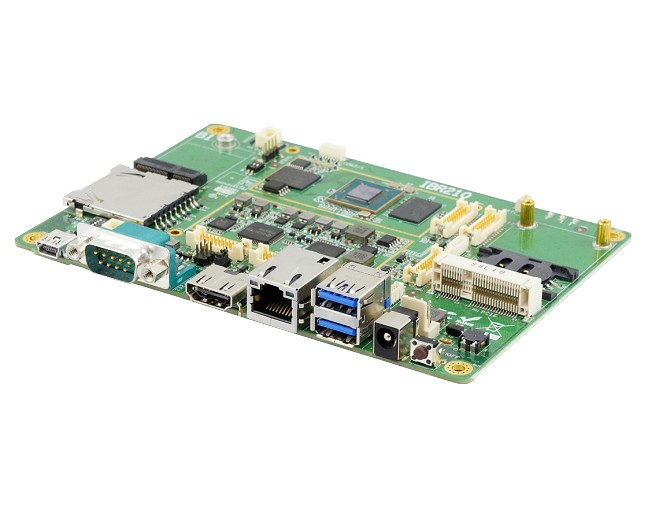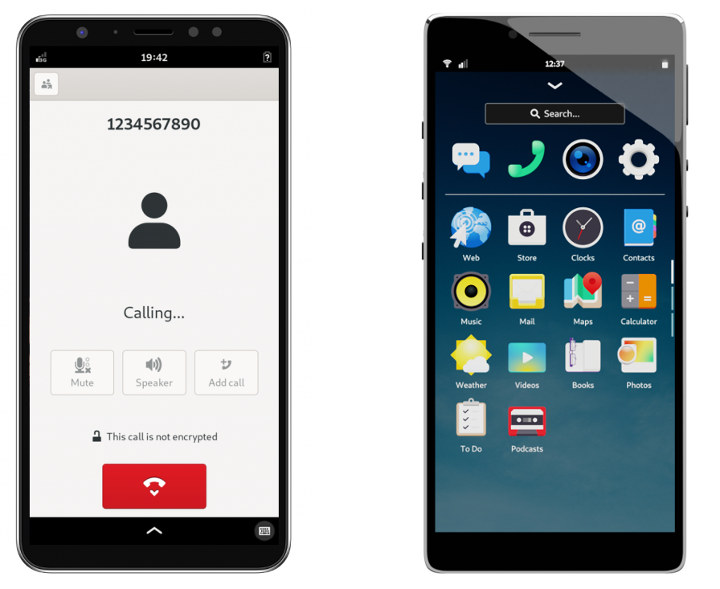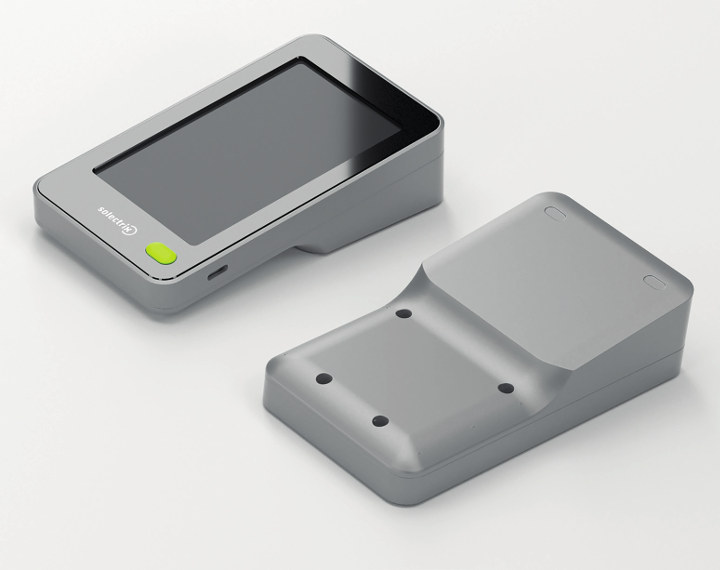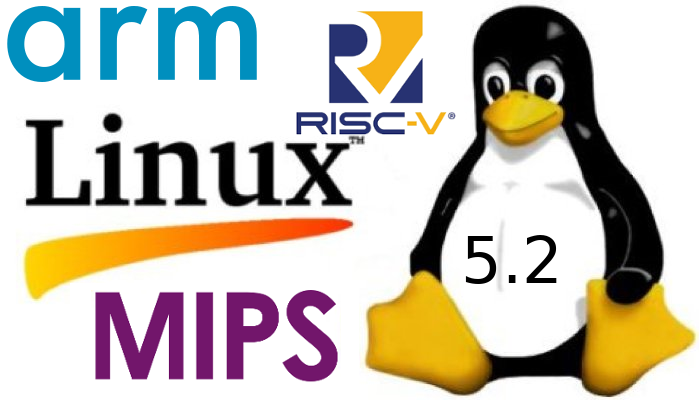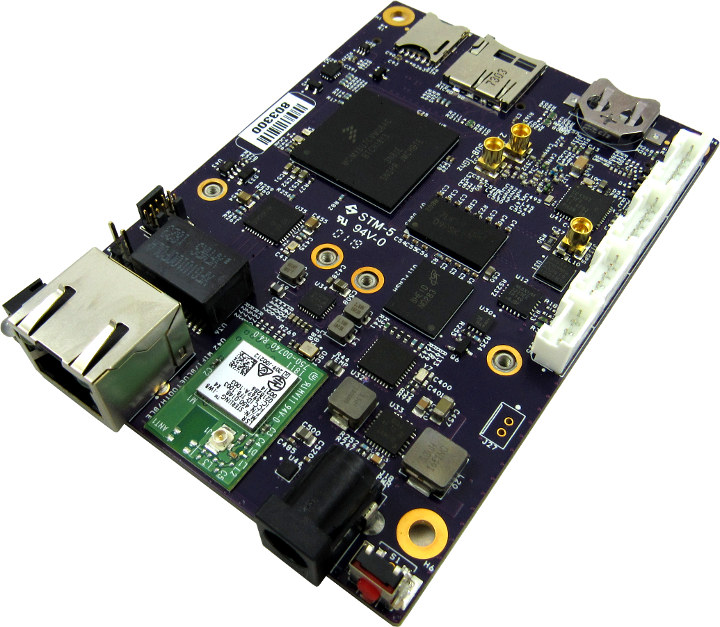The latest release from IBase is a single board computer that seems to be designed for the mass business markets, especially in signage. The IBR210 is a 3.5-inch (147 x 102 mm) low-power multimedia SBC based on the NPX ARM Cortex-A53/Cortex-M4 i.MX 8M processor that comes in either a dual or quad-core running in the 1.3 GHz to 1.5 GHz frequency range. The unit was announced on August 1, 2019, but as of yet there is no pricing information. The GPU is a Vivante GC7000Lite/GC7000VLX, and an integrated Cortex-M4F real-time core, in the i.MX8M. Although for the i.MX8M Mini is a faster and newer SoC, the i.MX8M supports 4K video and HDR. The system runs Android 9 or Yocto v2.5 Linux, with up to 3GB soldered LPDDR4 and up to 64GB eMMC. The video output supports 4K via HDMI 2.0, while there are 2 USB 3.0 ports. The board supports […]
Librem 5 Linux Smartphone Specifications Finalized
If you were interested in purchasing, or more exactly pre-ordering, a privacy-focused, open source Linux smartphone with clearly defined hardware specifications, Purism Librem 5 was not quite for you. Until today that is, as while the company did not commit to exact specifications at the beginning of the project, Purism has now revealed the full specifications of Librem 5 Linux smartphone. Librem 5 specifications: SoC – NXP i.MX8M quad-core Cortex A53 @ up to 1.5GHz, Cortex-M4 real-time core, 3G GPU with OpenGL/ES 3.1, Vulkan, OpenCL 1.2 support System Memory – 3GB RAM Storage – 32GB eMMC flash, MicroSD slot up to 2 TB Display- 5.7″ IPS TFT touchscreen with 1440×720 resolution Connectivity Cellular Option 1 – Gemalto PLS8 3G/4G modem w/ single sim on replaceable M.2 card Option 2 – Broadmobi BM818 (made in China) nanoSIM tray Dual-band 802.11a/b/g/n WiFi 4, Bluetooth 4.0 GPS – Teseo LIV3F GNSS Cameras – […]
Solectrix SX Mobile Device Kit Runs Linux or Android on NXP i.MX8M Mini Processor
In the last two years or so, we’ve seen the development of Linux phones that are expected to launch in the next few months with products such as PinePhone, Purism Librem 5, or even Necunos NC_1. Solectrix SX Mobile Device Kit also targets Arm-based mobile devices, but it is somewhat different, as the i.MX8M Mini development kit aims to help with the design of Android or Linux mobile devices with software, hardware and housing available, but more geared towards specific business use cases, as it comes with optional Gigabit Ethernet and USB-to-UART ports, and no cellular connectivity. Solectrix SX Mobile Device Kit (MDK) specifications: SoC – NXP i.MX8M Mini single to quad-core Cortex-A53 processor clocked at up to 2.0GHz, Arm Cortex-M4F @ 400MHz, and 2D / 3D GPU (OpenGL ES 2.0) System Memory – 2GB LPDDR4 Storage – 8GB eMMC Flash, microSD card slot Display – 4-lane MIPI DSI; capacitive […]
NXP i.MX 7ULP Enters Mass-Production, EVK and Systems-on-Module Announced
Last year, we wrote about F&S Elektronik Systeme PicoCORE MX7 system-on-module (SoM) powered by NXP i.MX 7ULP processor manufactured with a 28nm FD-SOI process, and that was announced a year earlier. The official launch of the module was planned for Q3 2018, but there have been some delays as LinuxGizmos reports NXP has only started mass production of their i.MX7 ULP this June. With the official launch of i.MX 7ULP, the company also introduced the official i.MX 7ULP Evaluation Board (MCIMX7ULP-EVK) as showcased on Element14’s community and several other companies announced i.MX 7ULP systems-on-modules. Benefits of NXP i.MX 7ULP Processor The i.MX7 ULP family of processors is an extremely power-efficient series, that is utilizing lower power for more functions. The SoC is being touted as the most power-efficient processor that can be obtained that also houses a 3D GPU. Although like the i.MX7, the i.MX 7ULP combines both Cortex-A7 and […]
Arm Techcon 2019 Schedule – Machine Learning, Security, Containers, and More
Arm TechCon will take place on October 8-10, 2019 at San Jose Convention Center to showcase new solutions from Arm and third-parties, and the company has now published the agenda/schedule for the event. There are many sessions and even if you’re not going to happen it’s always useful to checkout what will be discussed to learn more about what’s going on currently and what will be the focus in the near future for Arm development. Several sessions normally occur at the same time, so as usual I’ll make my own virtual schedule with the ones I find most relevant. Tuesday, October 8 09:00 – 09:50 – Open Source ML is rapidly advancing. How can you benefit? by Markus Levy, Director of AI and Machine Learning Technologies, NXP Over the last two years and still continuing, machine learning applications have benefited tremendously from the growing number of open source frameworks, tools, […]
Linux 5.2 Release – Main Changes, Arm, MIPS & RISC-V Architectures
Linus Torvalds announced the release of Linux 5.2 last Sunday: So I was somewhat pre-disposed towards making an rc8, simply because of my travels and being entirely off the internet for a few days last week, and with spotty internet for a few days before that [*]. But there really doesn’t seem to be any reason for another rc, since it’s been very quiet. Yes, I had a few pull requests since rc7, but they were all small, and I had many more that are for the upcoming merge window. Part of it may be due to the July 4th week, of course, but whatever – I’ll take the quiet week as a good sign. So despite a fairly late core revert, I don’t see any real reason for another week of rc, and so we have a v5.2 with the normal release timing. There’s no particular area that stands […]
Gateworks Ventana GW5910 SBC Targets WiFi, BLE & Sub-1GHz IoT Gateways
Freescale/NXP i.MX6 based Gateworks Ventana single board computers have been around at least since 2013 and were initially targeting networking processing applications for the industry. They could be used into all sort of gateways with cellular or WiFi connectivity for instance, thanks to the presence of mini PCIe sockets. But the latest Gateworks Ventana GW5910 SBC does not exclusively relies on mini PCIe cards for wireless connectivity, as it includes an onboard Laird Sterling 802.11b/g/n WiFi & Bluetooth module, as well as optional TI CC1352P dual-band Wireless MCU supporting Sub-1GHz and 2.4GHz RF, and an optional on-board u-blox GPS module, which should lower the total cost compared to solutions with mini PCIe cards. Ventana GW5910 specifications: SoC – NXP i.MX6 Dual Core Arm Cortex-A9 SoC Processor @ 800MHz System Memory – 512MB DDR3-800 SDRAM Storage – 256MB Flash System Memory, microSD card slot, mSATA socket Connectivity Gigabit Ethernet Port Onboard […]
Google Fuchsia Operating System Gets its own Developer Website
Google has been developing Fuchsia open source operating system based on Zircon kernel for several years. It’s still unclear what’s the end goal. Will it replace Android or/and Chrome OS, ditching the Linux kernel for Zircon in the process? We don’t know, and Google claims its an experimental endeavor. Only the future will tell. We’ve had access to the source code since 2016, but Google has now launched a dedicated developer website for Fuchsia: fuchsia.dev This is year 2019, and Google being a Western company it should not be surprising the first part of the documentation is a Code of Conduct, but there’s also plenty of technical documentation with a glossary, getting started guide, building instructions, an overview of the OS, code samples, and instructions to contribute either by testing or submitting changes to Gerrit. Fuchsia is strictly a 64-bit operating system at this stage with support for Arm64 and […]


